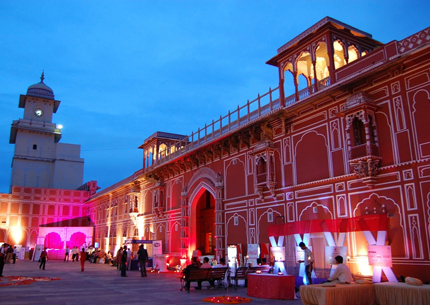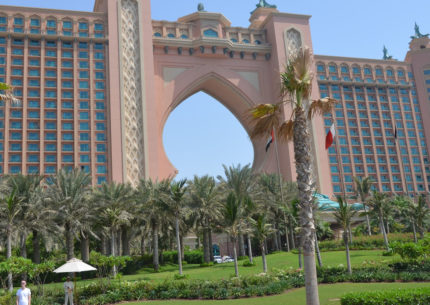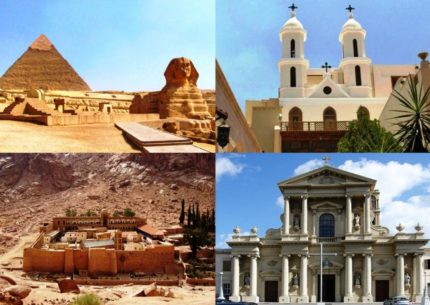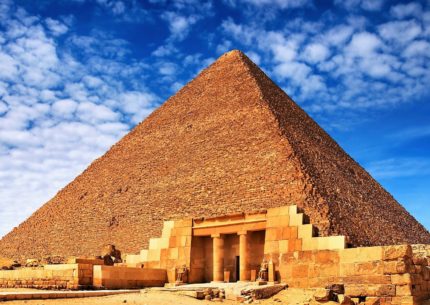Settled in the rugged hills of the Aravallis, Jaipur is the pristine jewel in the desert sands of Rajasthan. Jaipur is as remarkable for its marvellous architecture and town planning as it is for the lively spirit of the people who inhabit it. The city presents a unique synthesis of culture that has to be experienced in order to be appreciated.
With its origin buried deep into the pages of history, the city still exudes a magical old world charm; an aroma of chivalry and romance is evident, despit having evolved into a city that is the hub of modern commercial activity in the region. Tell-tale signs of the glorious past and regal splendour of the city lie strewn across with gay abandon.
The colourful and intricately carved monuments are adequately matched by the lively spirit of fanfare, festivity and celebration of the people. Even today, one can find weather beaten faces with huge coloufrul trurbans, fierce moustaches and lips that spontaneouslya crease into a heart warming smile.
A city like Jaipur, where modernity and tradition live hand-in-hand, is truly rare. Perhaps this is what makes it an attractive destination for tourists who flock to Jaipur , year after year.
The Hawa Mahal, or the "Palace of Wind" built by Maharaja Sawai Pratap Singh in 1799 A.D. is characterised by elaborate and fanciful architecture.
The broad pyramidical facade comprises five storeys of semi octagonal overhanging windows with perforated screens, domes and spires.
At a short distance of 11 kms . from Jaipur, the Amer Fort complex stands amidst wooded hills overlooking the Delhi-Jaipur highway, with its forbidding ramparts reflected in the still waters of the Maota Lake below.
One of the finest examples of Rajput architecture, it was the ancient capital of the Kachhawah rulers. The original palace was built by Raja Man Singh and additions were made later by Sawai Jai Singh.
Within the palace are the Diwan-e-Aam or the "Hall of Public Audience", the Diwan-e-Khas or the "Hall of Private Audience" and the Sukh Niws where a cool breeze blows across channels of water for the purpose of air-conditioning.
Here are the private chambers of the queens with windows having latticed screens so that the ladies could watch the proceedings of the royal court inprivacy. There is also the Jai Mandir or the "Temple of Vicotry", with its famed Sheesh Mahal, the scintillating "Hall of Mirrors"
The western skyline is dominated by the extensive walls, watch towers and gatewasys of the Jaigarh Fort.
It is one of the few military structures of medieval India preserved almost intact, containing palaces, agrdens open and covered reservoirs, a granary, an armoury, a well-planned cannon foundry, several temples, a tall tower and a giant mounted acnnon-the Jain Ban, the largest cannon in the world.
Perched atop a pricturesque hill, the Nahargarh Fort offers a breathtaking view of the city below. Initially built by Sawai Jain Singh in 1734 A.D.
It was enlarged and given its present shape by Sawai Madho Singh in1885 A.D. Decorative motifs in some of the rooms are delightful.
From the windows of the nine identical suites, one gets a magnificent view of the city, complete witht he geometrical layout. From Amer there is a road to Nahargarh, which passes through the hills.
The City Palce is an imposing blend of traditional Rajasthani and Mughal art and architecture.
The City Palace complex houses several palatial structures. The first building in it is Mubarak Mahal, built by Kaharaja Madho Singh. It has a beautifully carved marble gate with heavy brass doors on either side of this gate. Beyond this gate lies the Diwan -e-Khas, or the "Hall of Private Audience".
Across a paved square lies the Diwan-e-Aam, or the "Hall of Public Audience". To the north-west is the stately and graceful seven storeyed Chandra Mahal, the residence of the ex-ruler. Each storey has a distinctive name and is a place of sheer beauty and luxury. Paintings, floral decorations, mirror walls and ceilings in the traditional style adorn the palace.




